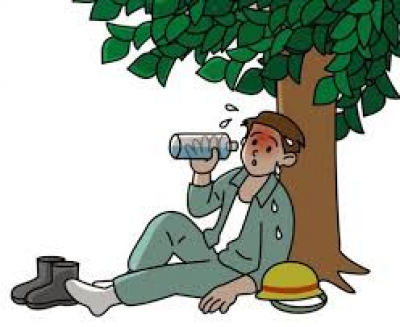
Heat exhaustion is a condition whose symptoms may include heavy sweating and a rapid pulse, a result of your body overheating. It's one of three heat-related syndromes, with heat cramps being the mildest and heatstroke being the most severe.
Causes of heat exhaustion include exposure to high temperatures, particularly when combined with high humidity, and strenuous physical activity. Without prompt treatment, heat exhaustion can progress to heatstroke, a life-threatening condition. Fortunately, heat exhaustion is preventable.
Warning signs of heat exhaustion include:
- Headaches, dizziness, lightheadedness or fainting.
- Weakness and moist skin.
- Mood changes such as irritability or confusion
- Upset stomach or vomiting.
- Heavy sweating
- Your skin may feel hot and moist and appear flushed.
In most cases, you can treat heat exhaustion yourself by doing the following:
- Rest in a cool place. Getting into an air-conditioned building is best, but at the least, find a shady spot. Rest on your back with your legs elevated higher than your heart level.
- Drink cool fluids. Stick to water or sports drinks. Don't drink any beverages that have alcohol or caffeine, either of which can contribute to fluid loss.
- Apply cool water to your skin. Take a cool shower or drench yourself with a water hose if possible.
Keep these tips in mind during the hot summer months!
Posted July 17, 2018
Return to Blog
